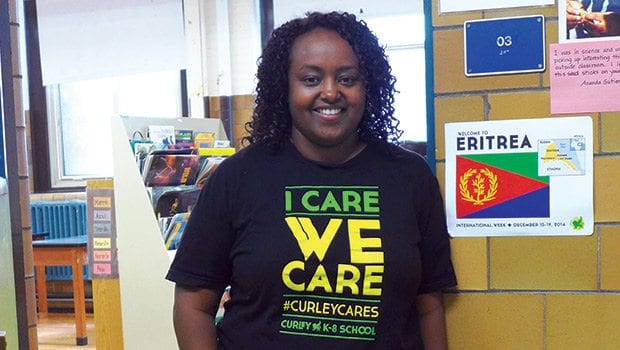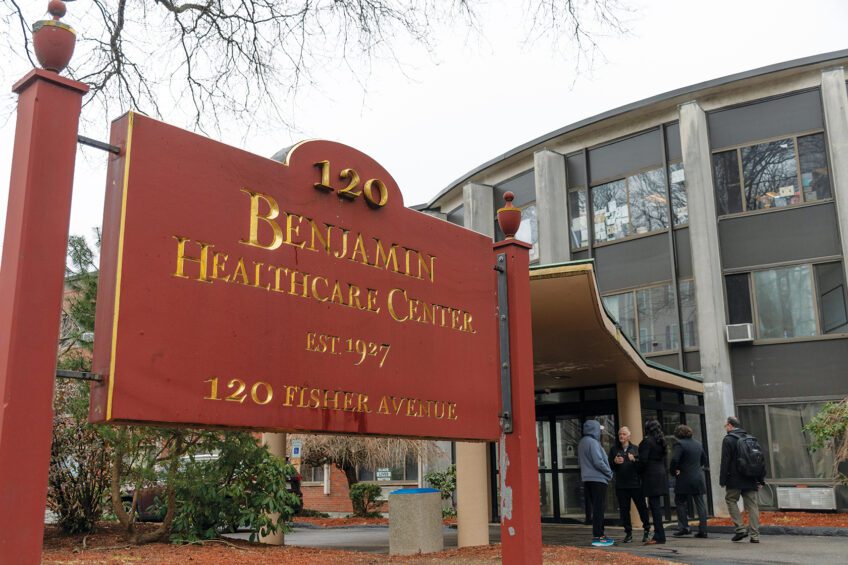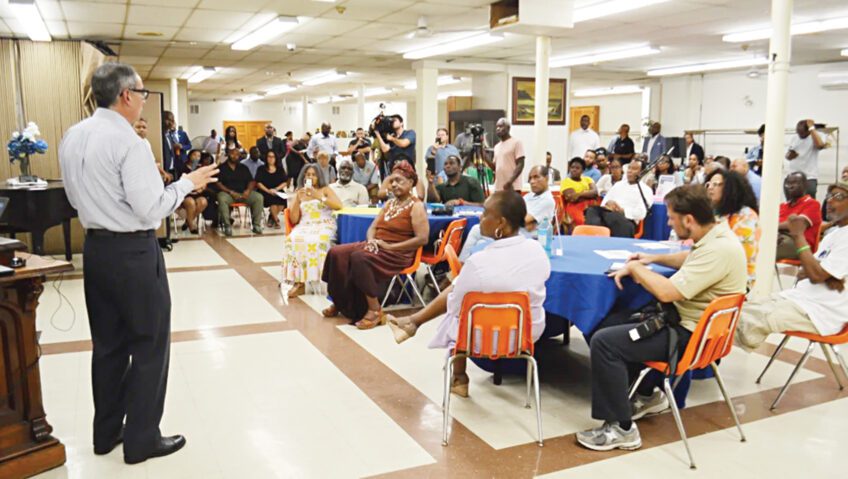
The school year was just days away, and Genet Mehari had poured much of her summer into preparation. As she put some final touches on her classroom, she looked forward to her third year teaching kindergarten through second grade science at Curley K-8.
Mehari spoke with the Banner to give an insider’s view on the challenges, and joys, a new teacher faces.
Designing the new year
For Mehari, the summer brought a welcome break that included a month dedicated to professional development. She spent July learning about the Wilson Reading Intervention Program, which she plans on incorporating this year to help students who are struggling with literacy progression.
Mehari devoted the last two weeks of summer to lesson plans and setting up the classroom. “It’s not a break in the way most people have romanticized summer to be,” she said. “My summer was spent 60:40. 60 percent school, 40 percent relaxing.”
When approaching planning, she said she asks herself, “What did I do for last year? Did I like it? Do I want to start a whole new unit?”
Mehari independently creates the curriculum for her K-1 class, made up of four-year-olds. The five-year-olds in Mehari’s K-2 class are taught two units prescribed by the district and one that she designs.
“One of the greatest things of teaching science at such a young age,” Mehari said, “is there’s a lot of flexibility” in designing the class and selecting books.
Her lesson planning process starts with a broad look at what she wants students to get out of the entire school year. Then she goes over it more in-depth.
“I want them to enjoy science and love it, and I think a lot about how I’m going to make sure they’re learning what they need to learn, but also having a good time,” she said.
Above all, the most significant goal of the first few days, Mehari said, is to make the students feel like a part of a community.
Outside the classroom
Few people realize how much work teachers do when they are not in the classroom.
During her first and second years, Mehari spent 3-4 hours a night preparing for her lessons. At least 25 percent of her job occurred outside of the classroom, she said. As she enters her third year, she hopes this decreases.
New teachers often end up funding significant amounts of their classroom supplies, in part because they are not always aware that they can ask the community for donations and also because they often feel urgency to establish their classroom, said Mehari. She recalled that in her first year she spent “a few thousand dollars on school items, supplies, furniture. Things I thought I needed that were beyond the scope of what the school would provide.”
By her second year, she gained a better sense of what equipment she truly needed, and was able to ask students and find online resources for some of the supplies. Parents were especially helpful, she said.
In a survey conducted by Boston Teachers Union, teachers of every experience level reported that they used their own money to purchase classroom supplies, and most spent $700, said Richard Stutman, BTU president.
“[It’s] disgraceful,” he said. Stutman believes it is “reasonable” to require teachers to buy their own hand sanitizer, but not items such as books, bookshelves, crayons and extra calculators for students. “We don’t ask firemen to provide their own hose. … [But] we ask teachers to provide their own chalk.”
Parents pitch in
The Curley school benefits from strong parental engagement. Last year, two parents helped in Mehari’s classroom on a weekly basis, and this year already parents have helped make and put up new school signage.
Parental fundraising also made possible a music program for the lower grades.
That strong sense of parental community and its reputation for involvement often draws new parents into the school’s orbit.
Mehari said that she has found that “parents will be involved in any way they’re given a chance to be involved.”
One issue Mehari notes: the lack of diverse parental engagement. White parents primarily are active in the school, which she attributes to greater available time and resources for devoting to such efforts. Curley’s student body was primarily Hispanic (57.9%) and low-income (72.8%) with notable showing of blacks (18.7%) and whites (17%) during the 2013-2014 school year, according to the Boston Public Schools’ 2014-2015 Report on Teaching and Learning.
Struggles for teachers
Curley practices “inclusion” classrooms that mix special education students with those with more typical needs. In such classes teachers must ensure that “everyone learns at a different pace and at the same time,” said Mehari, who believes that such goals are difficult to achieve without more teacher support.
“[Teachers are charged with] making sure that kids who have different kinds of needs are met. All the needs of all the kids are met every day. That’s a lofty hope,” she said. “A lot of teachers are overwhelmed.”
More than one-fifth of Curley’s student body fell into the special education category during the 2013-2014 school year, reports the BPS.
Mehari said that in order to meet so many diverse needs, a classroom needs more teachers in the classroom.
New teacher
Her primary advice to new teachers is to network with peers, find a mentor and watch others teach. During her first year, Mehari used her spare time during the school day or used a personal day to observe others teach.
“It was great to see someone with a completely different set-up. I watched a lot of teachers who teach out of what we call ‘cart’, who don’t have their own classroom. … To see it being done in that way and know that it still can be done well was great for me. It really changed the way I used my classroom.”
Mutual support
In many ways, teachers come together in a community to help each other. Mehari cited the BTU and its “How to Survive Your First Year” panel at the New Teachers Institute as an “incredible resource.” Speakers there gave advice on topics that included how to teach students who are English Language Learners and tips for entering one’s first year.
The BTU provides a variety of resources for new teachers such as a program that matches them with a mentor for their first year and a toolkit for new teachers.
Path to Curley
Initially, Mehari envisioned herself teaching science or math to students between 4th and 7th grade.
“I knew if I could get a job as a math or science teacher it would be a dream,” she said.
Mehari holds a bachelor’s in science from University of California Davis and a master’s in education from University of Massachusetts Boston. She completed a teaching residency at Orchard Gardens K-8 before joining Curley.
Mehari was drawn to apply to Curley because of her proximity to the school and its solid reputation in the community. Its only science opening was for K-2. Her love of the subject inspired her to take a chance on the age group and it paid off.
“It’s a great fit,” she said, “teaching science at such a young age is a gift.”
Mehari says she has found that young children are deeply curious and eager to match a teacher’s excitement. Every day is a surprise: “You never know what’s going to come out of their mouths or what they’re going to do or what they’ll find interesting.”






